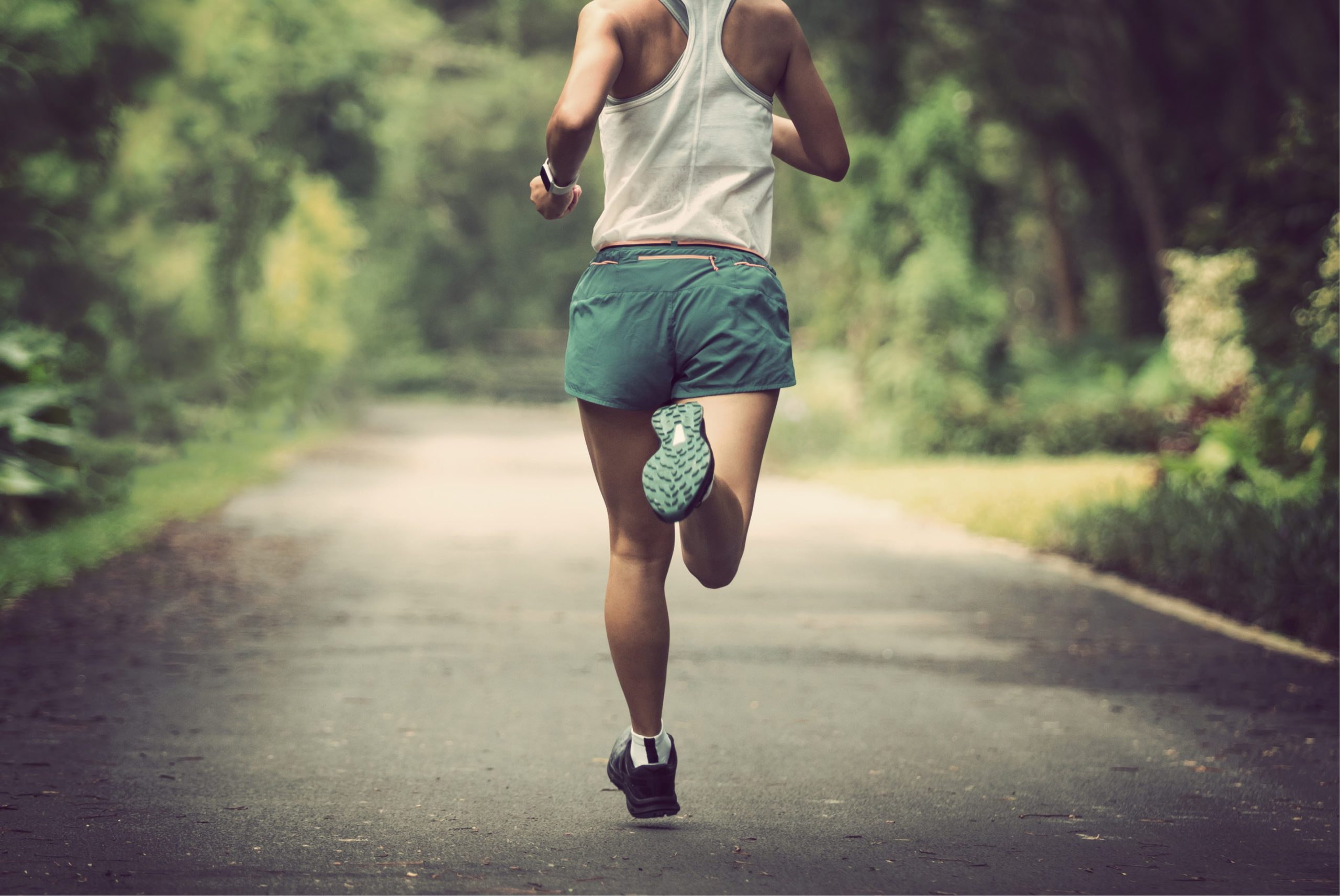
Great cross country running is about endurance and speed. You may already be training with an effective mix of intervals, long distance, tempo, and fartlek workouts. But what about strength training? Did you know strength training can improve performance in long distance runners?
Numerous studies show that combining strength and endurance training:
- Improves running economy (the amount of oxygen your body needs to run at a certain pace)
- Improves time to exhaustion at maximal aerobic speed
- Reduces injury risk
- Helps strengthen muscles that are frequently neglected or weakened by running
Here is a list of 5 strengthening exercises that are proven to maximize your running performance. Try these exercises during your preseason training to get the most out of your training regimen.
Back Squats
Increases in strength with the back squat translate to increased force through the ground, even at faster speeds when the foot is in contact with the ground for less time. Studies show the more strength a runner has with a 1 Rep Max squat, the less taxed the legs are with each stride. Squatting increases the speed at which muscles can reach their full force. The faster the muscle can reach max force output, the longer the muscles have to relax between strides which may lead to a longer time before exhaustion when running.
- Position your hands just outside of your shoulder width to allow the bar to rest on your upper trapezius muscles. Keep your head from dropping forward or extending backward.
- Bend your knees while letting your hips move back and keeping your chest up. It doesn’t matter if your knees go over your toes, but keep your knees in line with your toes. Don’t let your knees move inward. You can let them move outward a bit as you the squat deepens.
- Push your mid foot into the floor to rise.
Short Foot Exercise
Just before your foot strike the ground, it is in a supinated position (bottom of foot pointed inward). As you place weight onto the foot it flattens and pronates (bottom of foot turns outward). Then, as you push off, your foot goes back into the supinated position again. This movement happens over and over with every stride you take. Having adequate foot strength and muscular endurance to control this movement pattern is key to preventing injuries in the feet, ankles, knees, and hips. This can particularly help to prevent over-pronation which often results in shin splints (posterior tibialis stress syndrome).
- Standing barefoot and roll your weight to the outer edges of your feet while trying to raise the arch of your foot.
- Hold that position for 6 seconds, relax then repeat. You can increase the resistance by using a Theraband around your ankles.
Side Steps with Resistance Bands
A strong gluteus maximus and gluteus medius will improve your running mechanics by preventing your knees from collapsing inward. This will improve the efficiency of every stride and prevent knee injuries like IT Band Syndrome and shin splints.
- Place a resistance band around your midfeet (this band location is proven to better recruit gluteus maximus and gluteus medius).
- Bend your knees slightly, lean forward slightly, keep your back straight, and step to the side.
Split Squats (with rear leg elevated)
This exercise will improve strength in your quadriceps, gluteus maximus, and your hamstrings. All of these muscles work together with every stride, so it is important strengthen each muscle group to meet the demands of intense running challenges.
- Place your one leg behind you on top of a workout bench or similar height object. Get into a wide stance from front leg to back leg.
- Descend slowly, keeping your upper body upright so you come straight down, rather than lunging forward.
- Press up into starting position. Make sure your front knee stay in-line with your front foot and does collapse inward.
Barbell Hip Thrust
Overusing your quadriceps (quad dominance) can lead to hip, knee, and foot issues for runners. Balancing quadriceps and glute strength is crucial in creating a balanced stride. Stronger gluteus maximus muscles have been shown to increase running power and speed. It will also improve your performance during uphill battles. Studies show the barbell hip thrust as the optimal exercise for training this muscle group due the increased activation with this exercise over squats and split squats.
- Place a loaded barbell parallel to a bench.
- Sit on the floor with your back up against a workout bench.
- Rest your upper back against the bench and lift your hips slightly off of the ground.
- Press upwards by squeezing your glutes and push your feet into the floor.
Making strength training a preseason priority will help keep you racing faster while staying healthy. If you have any questions about these exercises, contact our Marlton office! You can also schedule a running gait analysis at any EXCEL office near you.
—
The medical information contained herein is provided as an information resource only, and does not substitute professional medical advice or consultation with healthcare professionals. This information is not intended to be patient education, does not create any patient-provider relationship, and should not be used as a substitute for professional diagnosis, treatment or medical advice. Please consult with your healthcare provider before making any healthcare decisions or for guidance about a specific medical condition. If you think you have a medical emergency, call your doctor or 911 immediately. IvyRehab Network, Inc. disclaims any and all responsibility, and shall have no liability, for any damages, loss, injury or liability whatsoever suffered as a result of your reliance on the information contained herein.
